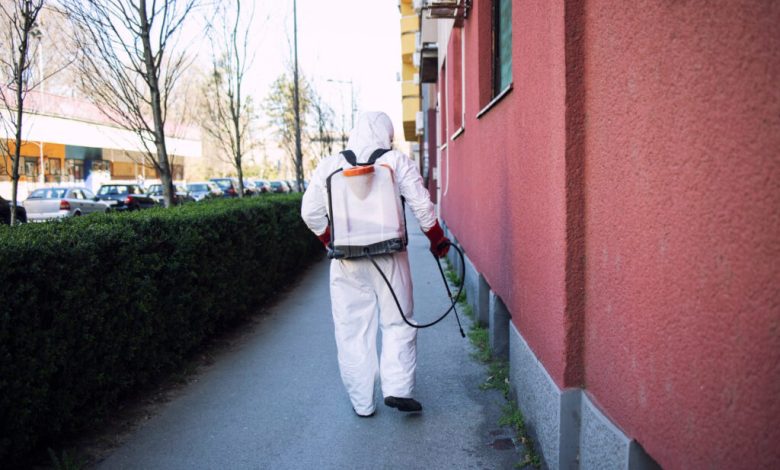
When it comes to ensuring the safety of your home following a pest treatment, proper ventilation is key. After your pest control company completes the treatment, it is important to follow the right steps to maintain a safe and comfortable environment. Not only does this help in clearing out any residual chemicals, but it also aids in dissipating any lingering odors. In this article, we’ll explore the essential steps for ventilating your home after a pest control service and explain why it’s a critical part of the process.
Why Ventilation is Important After Pest Control?
One of the primary reasons to ventilate your home after a pest control company performs its work is to remove airborne pesticide residues. While pest control treatments are highly effective in eradicating pests, they often involve the use of chemicals that can be harmful if inhaled in large amounts or over a prolonged period. This is especially true in areas with poor airflow or small, enclosed spaces. By ensuring proper ventilation, you minimize potential health risks and make your home safer for everyone inside.
Additionally, many pest control treatments leave behind strong odors that may be unpleasant for some. Ventilating your home helps eliminate these odors, allowing you to return to a more comfortable and fresh-smelling living space. For these reasons, proper ventilation is an important step that should never be overlooked after a pest treatment.
Immediate Ventilation Steps
Once the pest control treatment is complete, the first thing you should do is open all the windows and doors in your home. This creates a cross-ventilation effect, helping to circulate air and push out any lingering chemicals or fumes. If possible, use fans to enhance this process. By strategically placing fans near windows or doorways, you can help direct the treated air outside while drawing fresh air into your home.
Focus on rooms where the treatment was most concentrated, such as kitchens, bathrooms, or basements. These areas are often targeted by pest control applications and may have the highest concentration of chemicals in the air.
How Long Should You Ventilate?
The duration of ventilation depends on the type of pest control chemicals used and the extent of the treatment. In most cases, a home should be ventilated for at least 30 minutes to an hour immediately after the pest control company finishes the treatment. However, for more intensive treatments or in homes with limited airflow, it’s recommended to extend the ventilation time to several hours.
If weather conditions allow, keeping the windows open throughout the day can provide optimal results. Be sure to consult your pest control technician to get specific advice based on the chemicals they used and your home’s ventilation system.
Using Air Purifiers for Extra Safety
In addition to natural ventilation, you may want to use air purifiers to ensure that the air in your home is as clean as possible. Air purifiers equipped with HEPA filters are particularly effective at trapping fine particles, including any residual pesticide chemicals. Running air purifiers during and after the ventilation process can provide an extra layer of protection, especially in homes with sensitive individuals like children or those with respiratory conditions.
Other Important Considerations
There are a few additional steps to take during and after ventilating your home to ensure the safety of all occupants:
- Keep Vulnerable Individuals Away: Children, pets, and anyone with respiratory issues should be kept away from treated areas until the ventilation is complete. This ensures that they won’t be exposed to harmful chemicals while the air is still clearing.
- Follow the Pest Control Company’s Instructions: Each pest control company may use different products, and the chemicals they apply may require specific ventilation guidelines. Always adhere to the recommendations provided by the pest control professionals, as they are best equipped to guide you based on the treatments they’ve used in your home.
- Check Your HVAC System: If your home has a central heating and cooling system, you should confirm with the pest control company whether it’s safe to turn it on after the treatment. In some cases, the filters in your HVAC system may trap pesticide particles, so it’s often a good idea to change the filters before resuming normal use.
Monitoring Air Quality After Ventilation
After you’ve ventilated your home, it’s a good idea to monitor the air quality to ensure that all pesticide residues have been effectively cleared. If you notice any persistent odors, or if anyone in the home experiences symptoms like headaches, dizziness, or respiratory irritation, additional ventilation may be necessary. In some cases, a follow-up visit from the pest control company may be required to address lingering issues.
Conclusion
Ventilating your home after a pest control treatment is essential for maintaining a safe and healthy living environment. By following the right ventilation procedures and using additional tools like air purifiers, you can ensure that your home is free from both pests and harmful chemicals. Always take into account the advice of your pest control company, and don’t hesitate to reach out to them with any concerns about air quality after treatment.
Proper ventilation plays a vital role in the effectiveness of pest control services, helping you achieve a pest-free home while ensuring the safety and comfort of all occupants.